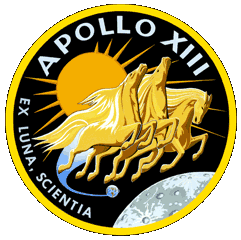Apollo 13 – “Houston We’ve Had A Problem”
Emergency In Space
The Apollo 13 mission was intended to be the 3rd to land on the Moon however, the landing attempt was aborted when an oxygen tank exploded en route to the Moon. The stricken spacecraft altered course to complete a free-return around the Moon, while the astronauts used the Lunar Module (LM) Aquarius as a lifeboat to return to Earth. The crew survived and splashed down nearly 6 days after launch.
Fast Summary Facts About Apollo 13!
- Mission Crew: James Lovell Jr. Fred Haise Jr., John Swigert Jr.
- Mission Objective: Moon Landing in the Fra Mauro Highlands
- Launch Date: 11th April, 1970
- Return Date: 17th April, 1970
- Mission Duration: Five days, 22 hours, 54 minutes, 41 seconds
- Distance Travelled: 1,001,443 kms (622,268 miles)
Interesting Facts About The Apollo 13 Mission!
- The Apollo 13 mission objectives were to land in the Fra Mauro Highlands, explore the surface and set up a series of scientific experiments. This targeted area was subsequently reassigned to Apollo 14.
- Seven days before launch, the backup Command Module (CM) Pilot John "Jack" Swigert, replaced Ken Mattingly (who would later fly on Apollo 16) due to Ken possibly contracting rubella from a fellow crew member.
- 55 hours after launch and 322,000 kms (200,000 miles) from Earth, the Apollo 13 crew were asked by NASA mission control to stir their oxygen tanks before a sleep period, at which point the number 2 oxygen tank exploded! Prompting ‘Jack’ Swigert to say;
"Houston, we've had a problem here."
- The explosion in the Service Module (SM) depleted the oxygen needed for electricity production to operate the CM which would allow a safe return to Earth.
- The crew transferred to the LM Aquarius and used its limited resources and power as a lifeboat to support them on the perilous journey back to Earth.
- The LM descent engine was also used to alter their trajectory to a free-return to Earth, around the Moon.
- On account of dangerously high CO2 levels in the LM during the return flight, the mission control staff devised a way to construct a crude device with plastic bags, cardboard and tape from materials onboard to fix the problem.
- The trip back was uncomfortable to endure on account of limited food, water and sleep due to the freezing conditions and limited power which had to be conserved to power up the CM Odyssey for re-entry as the crew approached Earth.
- The crew of Apollo 13 (and mission control), had to overcome many issues during the flight, any one of which could have spelt disaster if not solved correctly.
- The Odyssey eventually splashed down safely in the South Pacific Ocean on April 17th 1970 to the relief of the world who were eagerly watching.
- As a joke following Apollo 13's successful splashdown, the makers of the LM sent the makers of the CM an invoice for ‘towing fees’ of USD $312,421.24 for Aquarius towing the crippled Command Service Module back to Earth! Haha, Classic!
- The epic story of the Apollo 13 spaceflight was famously retold in the 1995 Tom Hanks movie Apollo 13!
You can visit Odyssey the actual Command Module from the Apollo 13 mission, as it is on display at the Cosmosphere in Hutchinson, Kansas!

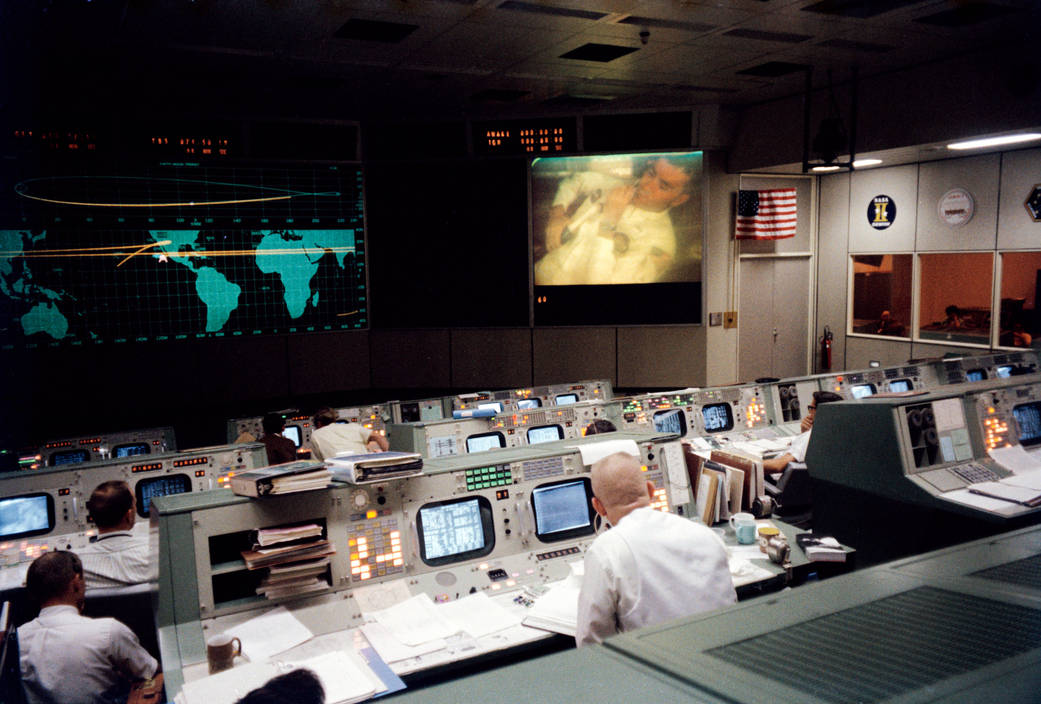

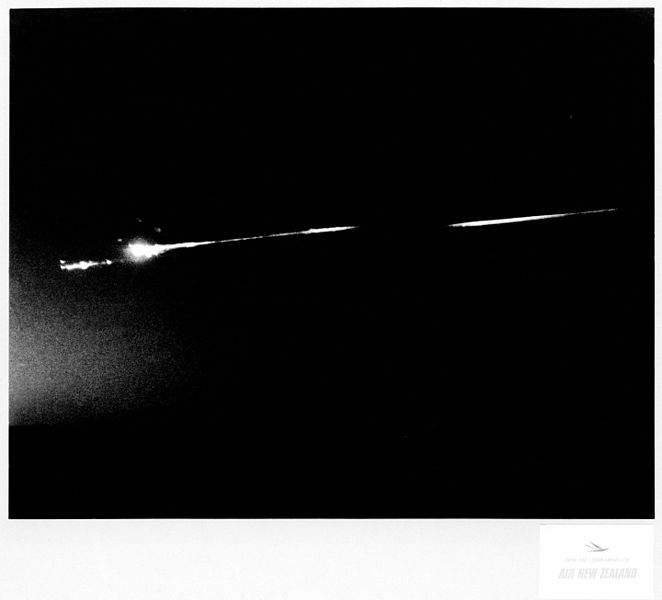
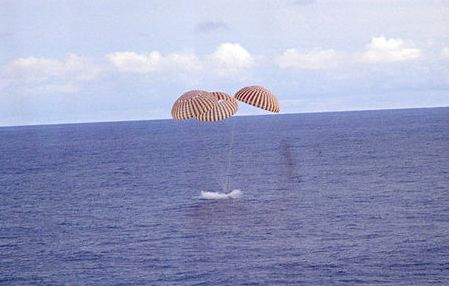

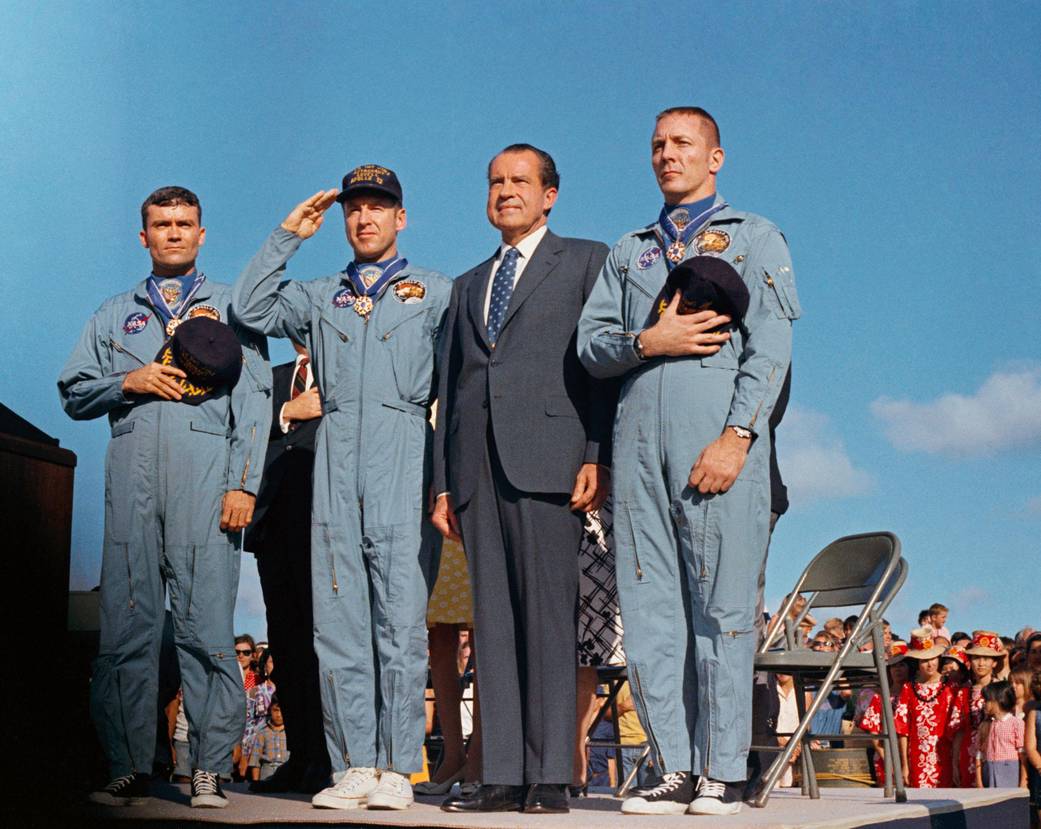
Timeline
Mission Control
Missing Panel
Burn up
Splashdown
Mission Control Celebrates Splashdown (Image Credit: NASA)
Presidential Medal Of Freedom

